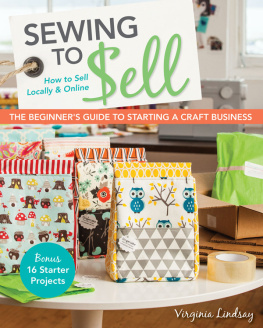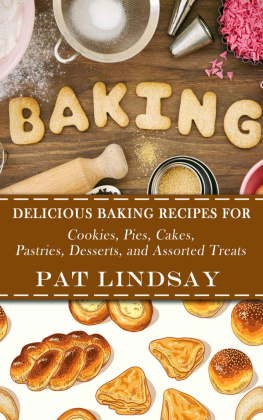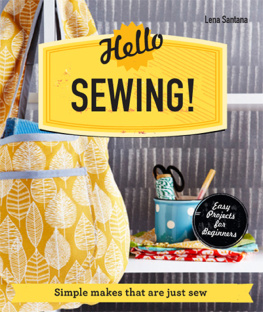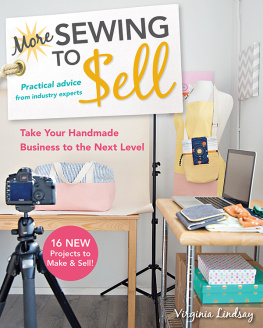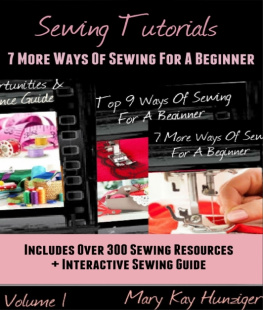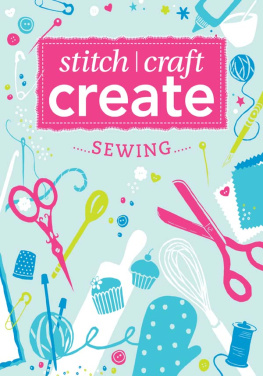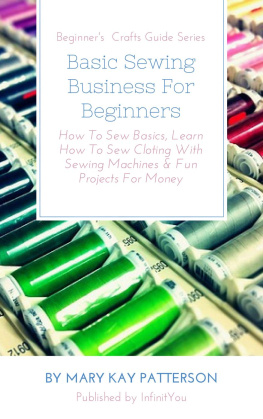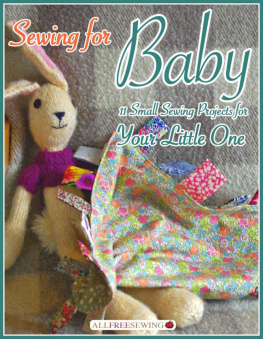Publisher: Amy Marson
Creative Director: Gailen Runge
Art Director/Book Designer: Kristy Zacharias
Editors: Lynn Koolish and Lee Jonsson
Technical Editors: Alison M. Schmidt and Mary E. Flynn
Page Layout Artist: Katie McIntosh
Production Coordinator: Jenny Davis
Production Editor: Alice Mace Nakanishi
Illustrator: Valyrie Gillum
Photo Assistant: Mary Peyton Peppo
Styled photos by Nissa Brehmer and instructional photos by Diane Pedersen, unless otherwise noted
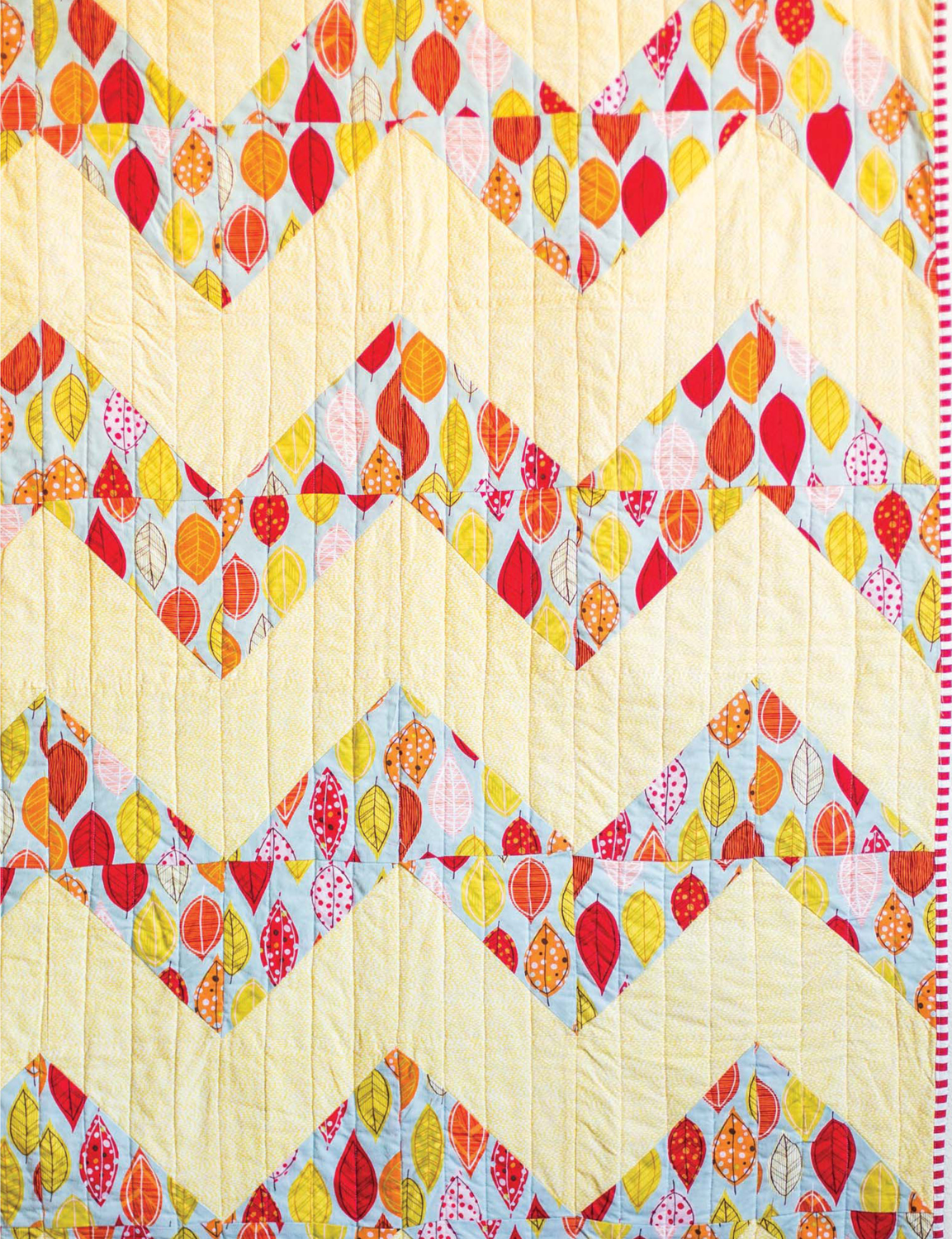
Dedication
This book is dedicated to my husband, Travis Lindsay. His confidence in my ability to create has given me the perspective that I can accomplish anything. And to my four childrenElsie, Anne, Calvin, and Marionwho inspire me every day.
Acknowledgments
Thank you so much to C&T Publishing for making this book possible and, in particular, Lynn Koolish, Roxane Cerda, and the rest of the team who worked on this book with me.
Thank you to my mom for her continued support and taking me to the craft store over and over again when I was a kid.
Thank you to my kind and thoughtful child-caregivers, Carly Deel and Donna McGuire. It felt wonderful to have my kids well cared for while I was working on this book.
Thank you to my good friend Amy Frank for letting me pick her sewing brain over and over again and for sending me her beautiful Blessing Band for support and inspiration.
Thank you so much to my sister-in-law and wonderful friend Jennifer Stein. Her fantastic photography is featured in this book. I can always count on Jen for friendship and support.
Thank you to my sewing friends Amy Dunn and Vanessa Hewell for always being there to talk sewing and to share their wisdom and photos for the book.
Thank you to Jessica Rider, Monica Donohue, and Candace Todd for letting me interview them and answering all my nosy questions!
Thank you to Jessica Fincham for sharing her beautiful sewing studio photos.
Thank you to Pam Thompson, Jen Primack, Debbie Pearson, Debra Cooper, and Jennifer Johnson for sharing photos of their beautiful handmade work.
Thank you to Art Gallery Fabrics, Dear Stella, Dritz, Monaluna, Fairfield, FreeSpirit Fabrics, Moda, Robert Kaufman Fabrics, Timeless Treasures, and The Warm Company.
INTRODUCTION
The fun of sewing, as with many creative endeavors, is creating delightful things that are beautifully designed and made with fabrics you love. For many of you, sewing hooks you and becomes a passion. You see wonderful fabrics and have to buy them. Then, of course, you want to try new techniques and ideas to use that fabulous fabric. You stay up late because you just have to finish that last seam and admire your completed work.
This enchantment with sewing can become a useful and valuable asset. Whether you sew curtains and pillows or pinafores and elegant evening bags, being able to sew is a skill that sets you apart. If you can sew, you can create something useful and beautiful. Many of our grandmothers sewed out of necessity. Most women had to be able to do their own mending and hemming. They made most of their childrens clothes and many of their own. They sewed tablecloths and pillowcases. They sewed aprons and quilts. Their skills were taken for granted, and sewing was often a chore along with the cooking and cleaning. Now, sewing is a choice that we make because we are drawn to create with fabric.
I love the nostalgia of sewing. It makes me feel connected to the past and to all those ladies who used to spend so much time with their needle and thread. I love how handmade things have a history and a personal connection. This personal connection is missing when you buy something that was made in an anonymous factory. This human touch and personal connection is why so many people are coming back to sewing and looking to buy handmade goods.
Making the leap from sewing for personal use to sewing as a professional can be a bit intimidating, and its only natural to feel a bit daunted. Yes, you will need to work hard on your skills and make sure your work is well made. You cannot go from just learning to sew to opening a shop, but you also dont have to be an expert sewist with twenty years of sewing experience either. Most likely, it is not your sewing skills that are holding you back, but rather your concerns about running a business and creating something that is worth buying.
The purpose of this book is to get you off the sidelines and start sewing your way to a job that you will truly enjoy. The informational chapters will give you all the resources you need to begin on the right foot. This book also includes sixteen sewing projects that you have permission to use so that you have a collection of go-to items to stock up your new shop. (This is not the case for all projects in books. For more information on copyrights and permissions, see you to do so! These patterns will be a great place for you to begin and then look at again when your shop needs something new and fresh.
As a special bonus, each group of projects gives you additional information on packaging, photographing your work for online sales, and promotional ideas.
Finally, I hope this book convinces you that you deserve to love your job and that you can make money doing something you love. Whether you create iPad covers or elaborate quilts, sewing to sell is a worthwhile and satisfying endeavor. As with all jobs, some parts you will really like and other parts will be a challenge for you to enjoy. But treating yourself like a professional, with a boss who demands hard work and expects the best (yes, that boss is you), will help you to become a well-rounded and successful seller of your own handmade goods.

FINDING YOUR SEWING STYLE
We all have our specific likes and dislikescertain colors, patterns, textures, and combinations that we find attractive. Your own specific style is what makes you unique. I am not talking about cutting-edge, wild, truly original style here (although if you have it, go for it), but instead, being true to what appeals to you.
Authenticity
It can be hard to put a specific name to your personal style, and trying to do so can artificially constrain you. Are you a romantic because you like ruffles? What if you like ruffles and bright colors? What if you like ruffles, bright colors, and only organic fabrics? Whats important is that you know what you like and what you want to make. Making what you think is beautiful and useful is a surefire way to create a successful business authenticity matters so much in a handmade business.
This authenticity and sense of personal style will give your work a cohesive look and will help you sell your work to your target group of customers who share your aesthetic. Although I try to think about what my customer may want to buy, it is always balanced by what I would want to make for myself. Through some trial and error, you can easily find a happy place that appeals to both you and your customers without sacrificing your personal sense of style.
Tip
TRY THIS:Many people struggle to get a feel for their own unique look. It can feel like a crisis in decision making or self-confidence. A great way to get a feel for your own style is to gather together prints, colors, shapes, and textures that appeal to you. Buy a corkboard or a large poster board. Pin or tape up pictures, ribbons, colors, and fabric scraps that you like, and anything else that you think is you. Keep this up in your sewing room to help you stay focused and keep yourself in touch with your own likes and style preferences.
Next page
